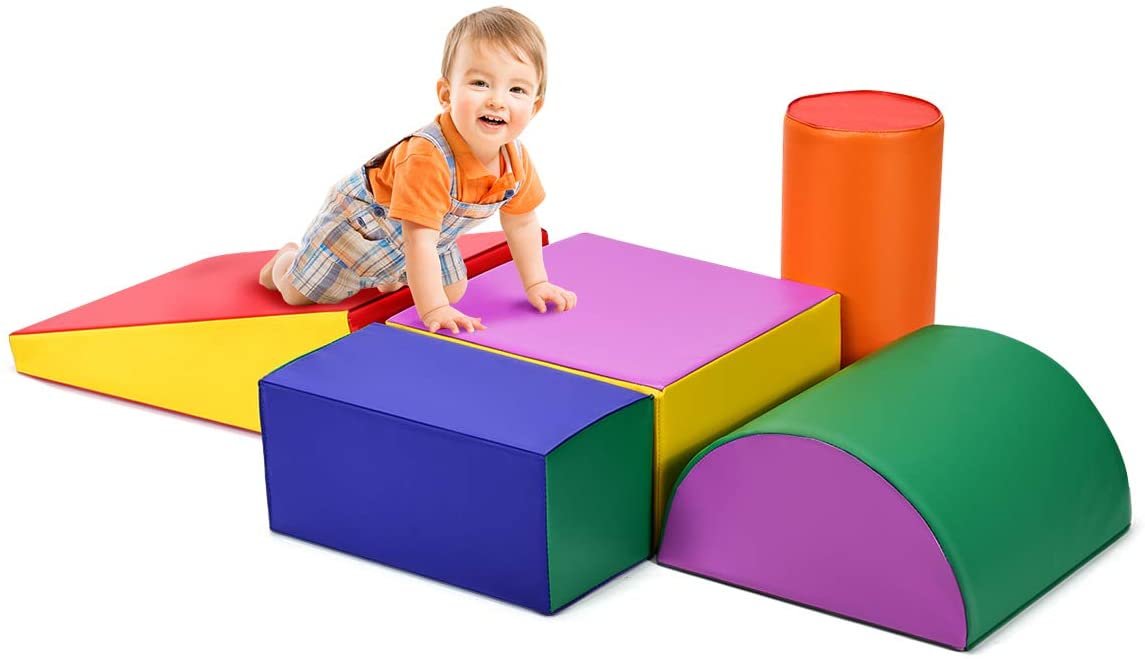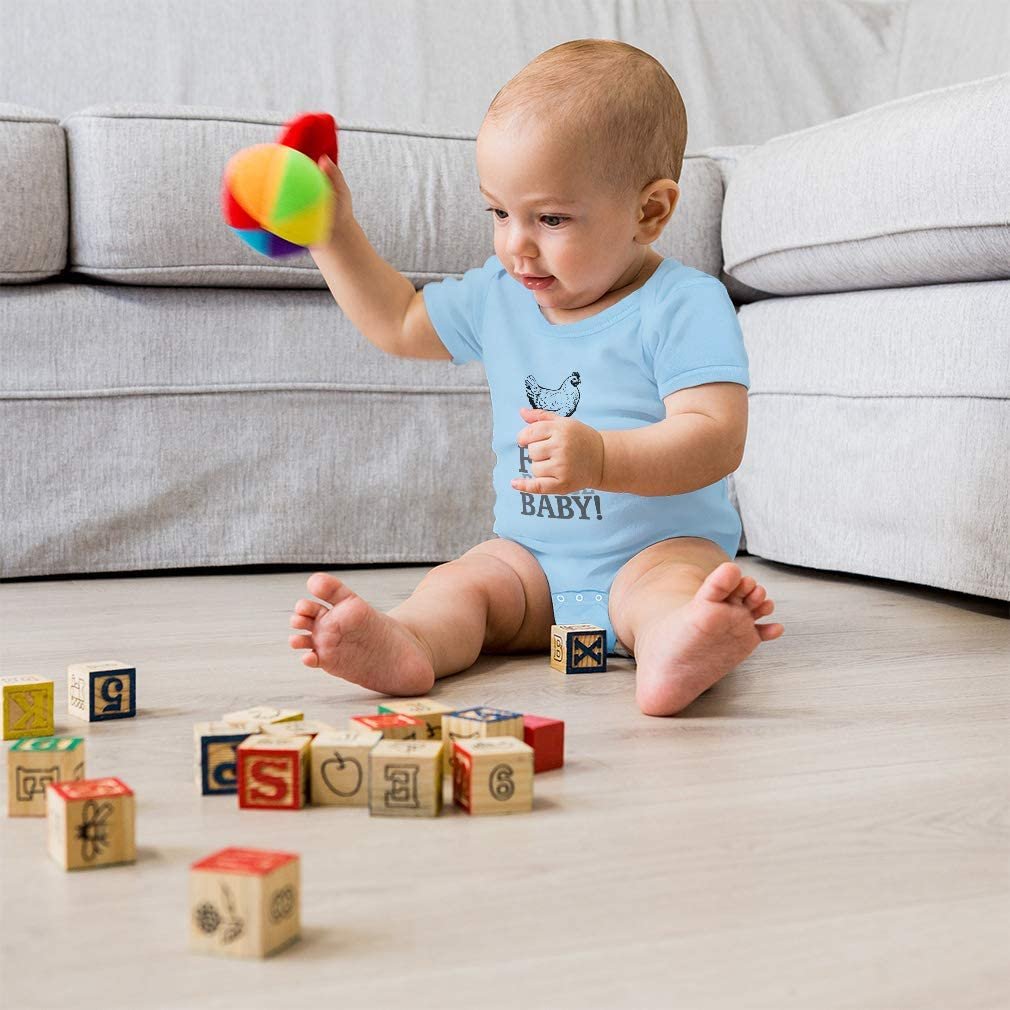Baby Toys! What to Look for and What to Avoid
with Dr. Whitney Haase
The way you play with your baby matters.
You love your little one, and you want to give them the best start you can. Did you know that how you play with your baby can actually affect how they move as a child or even as an adult?
In this post, we’re going to go over:
Why some toys can interfere with normal infant motor development
What toys and baby items you should avoid
How you can play with your baby to help their little brain and body grow!
Your little one's first year is SO busy. They go from just being able to breathe (and cry, eat, poop, and sleep!) to reaching, rolling, crawling, climbing, and maybe even walking! And of course, that first year is full of lots of play. Your baby is learning to do all of these things for the first time, and even though it's tempting to try to help your baby sit, stand, and walk, it's best to let your baby do these things on their own... and at their own pace.
Encouraging baby to do things too soon doesn’t help them.
Our bodies were designed to move in specific ways, and our brains develop with “movement blueprints” that are basically the instructions for us to control and use our bodies the right way. When we use our muscles and joints the way they were meant to be used, we can move more efficiently and be stronger, have less pain, and decrease our risk of injury. Our brains and bodies develop together, and in the first year of life, our movement will get progressively more complex. Movements will build upon each other, and it is important that we establish a solid foundation before trying to work on more difficult tasks.
This is the same principle as if you were trying to master an instrument, sport, or craft. We need to get the basics down first before we start adding in the more complex pieces. Movement is no different.
When we encourage our little ones to do things or be in positions before they can get into them on their own, we can actually make it more difficult for them to follow those “movement blueprints.” If baby is too young and hasn’t learned the correct pattern first, we can cause baby's little body to compensate and use the wrong muscles to control their movement. This is not good! Although we mean well when we try to “help” baby roll, sit, or walk, we aren’t actually teaching them how to do those activities. We’re teaching them how to do those things with compensations.
Letting your baby learn to do things for themselves allows them to get those basics down first. The more advanced patterns (like walking, jumping, and running) will come soon enough. I promise!
What toys should you avoid?
Now that we got some of that background information out of the way, let’s talk about the more practical things. How can you help baby stick with those amazing, foundational “movement blueprints?” What toys should you avoid getting for your little one?
Notice how baby is leaning forward and walking on his toes. Not a normal way to walk! Wait to uses a bouncer until baby can stand and walk without help.
Bumbo seats. Yes they’re convenient to keep baby in one place, but they’re terrible for baby’s core and hips. Please, just don’t use them.
Notice this baby’s forward lean. We can easily tell that this baby is compensating and not stable enough to be standing without help.
Walkers CAN be good toys if baby can already walk without one. Until then, keep the toy folded or use it during tummy time or when baby is seated.
We recommend avoiding using toys like seats, bouncers, walkers, bungee jumpers, and exersaucers. Aside from those items, if the toy or container keeps baby fixed in a position, don’t use it! If these toys are used too early (HINT: 99% of the time they are!), then baby learns to compensate instead of learning those good foundational movements.
Even though they can help keep baby entertained, and usually baby LOVES these things, they restrict your little one’s movement and should be avoided. After about 18 months of age, your little one has established a solid movement foundation, and these toys can be safely introduced at that time.
How should a parent play with their little one instead?
So... how can you play with your baby to help them develop into a strong little mover?? It's easy! Just let your baby explore things for themselves! We like to use lots of sensory toys on a big blanket so that baby is free to move and play... without being restricted to a single position! We call it “free-range play.”
These blocks are great for encouraging balance, climbing, and crawling — all unassisted! These are a favorite in Dr. Whitney’s home.
This baby is able to sit up on their own and play with the rattle and blocks. Baby’s neutral core (no leaning or slumping here!) shows this is a good position for play.
Baby is free to move and explore the toys and mirror on the mat. Mats like these are great for making tummy time more enjoyable for baby and parents.
Play tunnels are great for baby and small children and encourage lots of natural movement. Parents also love how little space they take up when they’re packed away. Dr. Whitney’s 5 year old still plays in her tunnels often.
Some great toys to play with include blocks to climb on, toys that encourage tummy time, mirrors, and sensory toys (like crunchy blankets, teethers, rings, buttons, play music, etc.). I’m also a big advocate of play tunnels, since they encourage more time crawling and can be easily packed away.
There are so many more good toys for your little one than bad ones. As a new parent, it can feel like you have to buy ALL the baby gear. I’m here to tell you that you don’t have to, and you actually shouldn’t. Spreading out a soft blanket and letting your little one figure out how to move on his or her own is best, it saves you money, AND it keeps your living room from being over crowded with bulky baby containers. Everyone wins!
Dr. Whitney Haase is trained to assess pediatric motor development and gently correct movement delays and asymmetries. If you have any questions about your child’s movement or would like to schedule an evaluation, call our office at (402) 256 6683 or click the link below to schedule.








